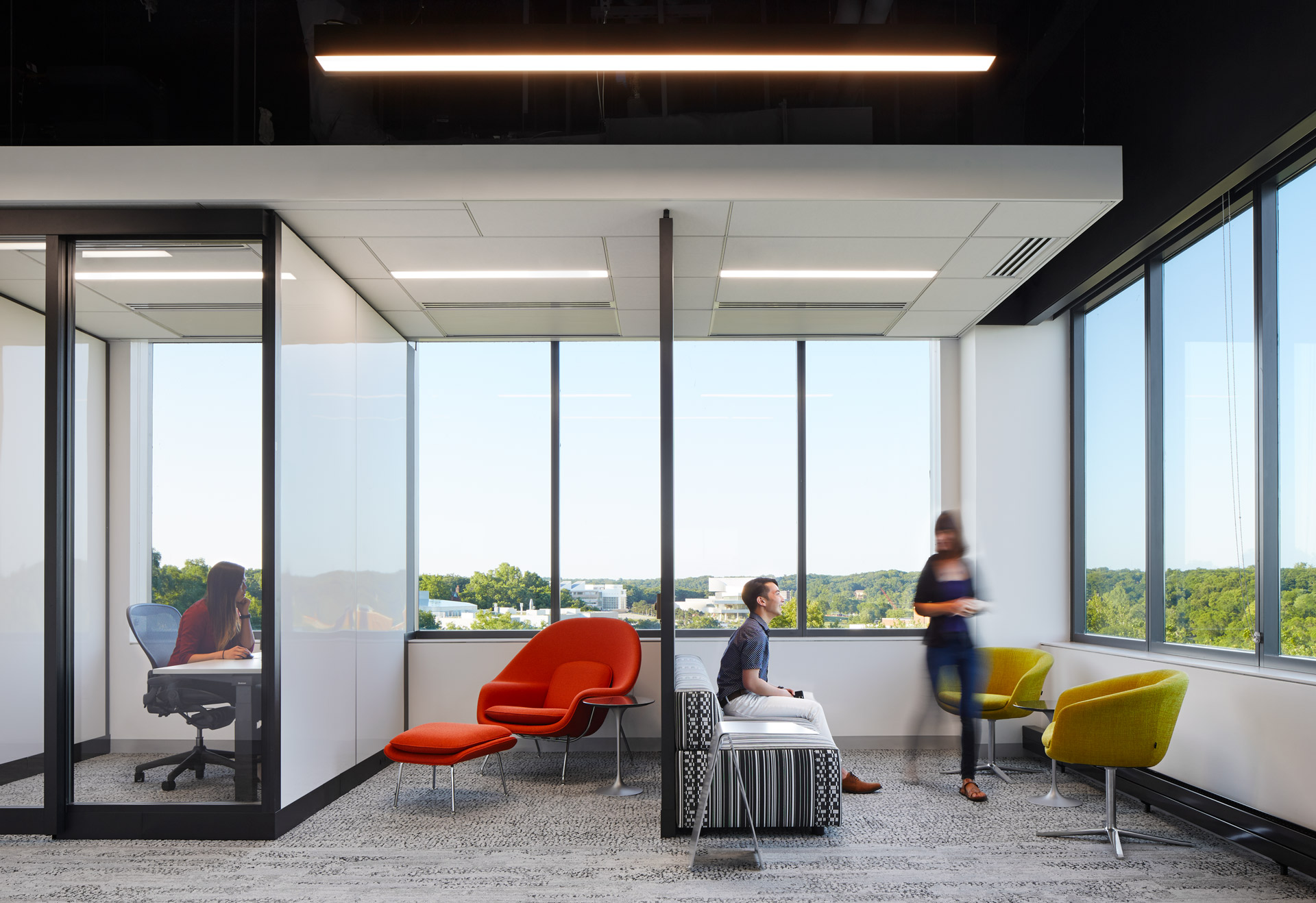
Creating Common Ground for Interdisciplinary Research and Collaboration
The emergence of precision medicine is dramatically changing the way healthcare professionals approach patient care. The concept of individual healthcare, customized to the unique needs of each patient, has garnered support and momentum from notable physicians and public figures, as well as the National Institute of Health.¹
Many campuses lack the space necessary to support interdisciplinary collaboration among allied health professionals. Those studying to become doctors, nurses, lab technicians, occupational and physical therapists, pharmacists, and psychologists are often relegated to individual siloes.
As architects and designers, we recognize the importance of creating facilities that elevate the work of individuals and teams of professionals. For decades health science facilities were designed with little regard for encouraging collaboration, elevating the human condition, and nurturing those who spend countless hours in search of the next innovation.
To create communities of health science scholars, we must create highly collaborative, interdisciplinary environments that establish common ground. When it comes to health science facilities, implementing a human purposed design approach has tremendous impacts on the collaborative and exploratory nature inherent within research and learning.
 UNIVERSITY OF TEXAS HEALTH SCIENCE CENTER AT HOUSTON — FAYEZ S. SAROFIM RESEARCH BUILDING
UNIVERSITY OF TEXAS HEALTH SCIENCE CENTER AT HOUSTON — FAYEZ S. SAROFIM RESEARCH BUILDING
Human purposed design draws strong parallels to evidence-based medicine and patient-centered care, two leading principles in health sciences:
David Sackett, OC FRSC, is regarded as a pioneer in evidence-based medicine. In the early 1990s, Sackett and colleagues defined evidence-based medicine as the conscientious, explicit, and judicious use of current best evidence in making decisions about the care of patients. Similarly, human purposed design is conscientious in its consideration of the potential impact of each design decision; explicit through its transparent process that brings all voices to the table; and judicious in ultimately making choices that support human health and vitality.
Like patient-centered care, human purposed design is a coordinated effort between multiple disciplines to ensure a process and spaces that are respectful of users’ needs and focuses on physical comfort, which significantly enhances the experience.
There are several ways to address these needs and create these communities of health science scholars:
 UNIVERSITY OF IOWA COLLEGE OF NURSING — BUILDING MODIFICATIONS
UNIVERSITY OF IOWA COLLEGE OF NURSING — BUILDING MODIFICATIONS
Long Life, Loose Fit
As technology and advancements in the health sciences rapidly change, so must the environments in which allied health professionals learn. The College of Nursing building at the University of Iowa was not designed for cross-disciplinary collaboration. BNIM is reorganizing the building to encourage interaction between students and faculty and meet the needs of the evolving interdisciplinary pedagogy. We are creating flexible, open classrooms and spaces along corridors for students to come together.
 UNIVERSITY OF IOWA INFORMATICS INITIATIVE (UI3)
UNIVERSITY OF IOWA INFORMATICS INITIATIVE (UI3)
Variety of Learning Environments
Design and research are both iterative processes — cycles that revolve around learning, doing, testing, and building. This process requires an understanding of the spectrum of spaces necessary for the variety of work. The University of Iowa Informatics Initiative (UI3) brings together brain scientists, engineers, nursing faculty, arts faculty, and more, to study big data and produce collaborative research proposals. The building offers large flexible classrooms with integrated technology, private meeting and study rooms, and common areas that create opportunities for researchers to interact in a casual environment. The variety of spaces supports the varied ways in which students assemble and learn from each other.
 UNIVERSITY OF IOWA INFORMATICS INITIATIVE (UI3)| UNIVERSITY OF MISSOURI SCHOOL OF MEDICINE — PATIENT-CENTERED CARE LEARNING CENTER
UNIVERSITY OF IOWA INFORMATICS INITIATIVE (UI3)| UNIVERSITY OF MISSOURI SCHOOL OF MEDICINE — PATIENT-CENTERED CARE LEARNING CENTER
Learning by Doing
As pedagogies have evolved, a higher emphasis has been placed on interdisciplinary, hands-on experiential learning. This requires spaces that assemble allied health professionals into a shared environment, working together as they will upon graduation. At the Patient-Centered Care Learning Center at the University of Missouri, students engage with each other in problem-based learning classrooms, clinical simulation rooms, and an active learning classroom. The Fayez S. Sarofim Research Building at the University of Texas Health Science Center in Houston saw a 10 percent increase in research staff due to its collaborative, active learning environments.

